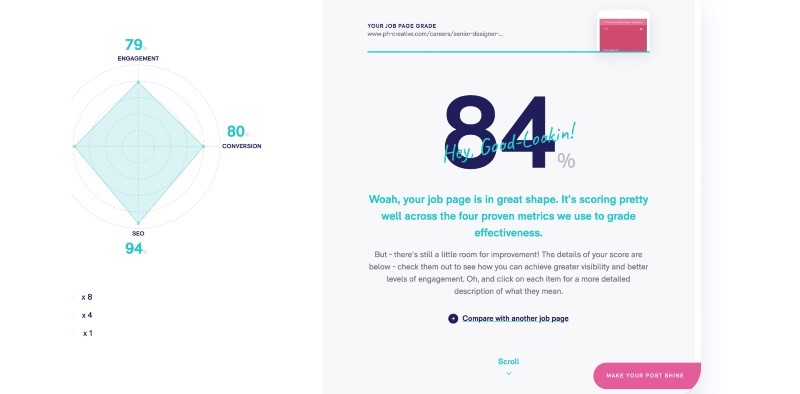Why “Red Flags” in Job Descriptions are Not as Bad as You Think
3 min read.
Recent research from Revelio Labs has revealed that so-called “red flag” language in job descriptions is on the up. That’s phrases like "can multitask," "fast-paced environment," "must handle stress" and "able to work under pressure."
In response to this data, the workforce analytics company suggested that employers should remove such wording and “give job postings a makeover” if they want to “attract the best talent.”
But do they mean the best talent, or just any applicant?
Removing red flags is a pointless exercise
The problem with this approach is it does not solve the real issue, which is not the phrases themselves, but the fact that they are understood to be euphemisms, designed to soften the edges of unappealing parts of a job and make the truth more palatable.
Understandably, candidates have learned to read between the lines with phrases that connote pressure, which better guides their decision on whether the role is right for them, but there is nothing inherently wrong with the language. It is the idea that it is misleading, or masks something sinister, that poses the problem.
The labour market is not the only one where such sugar-coating tactics are employed. Think about real estate dialect. When we see a house described as ‘quaint’, ‘bijou’ or ‘snug’, we know what the estate agents really mean is small, but we don’t denounce these phrases as ‘red flags’ masking a ‘toxic’ building. A little overdone, perhaps.
But if using euphemisms to lull talent is uninventive at best, removing any attempts at honesty (albeit clichéd ones) to make job descriptions more universally attractive is the wrong approach entirely.
It is a breach of trust, and detrimental to the meaningful connection you are trying to build with talent. Sure, it might lead to more applications, but how long will those new employees stick around? And how positive will their experiences be if you blindside them with the reality of their roles?
A better approach
The solution is to be more direct, not less. To find fresher, more nuanced ways of articulating the challenges of your roles. If you let your candidates know exactly what benefits they can expect for their work, (a day off on their birthday, flexible hours, a bespoke learning and development scheme,) it makes sense to let them know exactly what they are in for, even if that is long hours, high innovation, and difficult clients. That way, you interview people who are equipped with the facts and better placed to handle the trials of the job.
I once read a job posting that discouraged people from applying if they enjoyed “being the smartest person in the room.” I was taken aback at first, but after some consideration, I thought, “What a succinct way to say, “If you can leave your ego at the door and take criticism on board, you’ll be surrounded by talented people who will help you to learn and grow.”
The great thing about that line is it would be off-putting to many people but inspiring to others. One applicant’s red flag is another applicant’s green flag. And if your job description is filled with nothing but green flags to everyone who looks at it, it is not doing what it is supposed to, which is attract the people with the right disposition for your company and repel the rest.
The idea that you should remove “red flag” statements and try to be appealing to everyone is a fallacy. That is not how you differentiate; it is not how you “attract the best talent” and it is certainly not how you create a happy workforce.
The difference between toxic and truthful
Of course, no one should be expected to put up with a toxic workplace where they are subjected to abuse, discrimination, bullying or unreasonable expectations. But if you do have a dysfunctional internal culture, your energy is far better spent on taking steps to improve your environment, than in making further efforts to conceal any hint of the truth from candidates.
Phrases like “fast-paced” and “must handle stress” are, however, not a guaranteed indicator of “toxicity,” and it is unproductive to bandy around the word “toxic” to mean anything that might make an employee uncomfortable.
Let’s be real, growth is uncomfortable. Innovative work, long hours and tight deadlines are uncomfortable. Sometimes, discomfort is necessary. No Olympic athlete has ever won a gold medal without a healthy dose of stress. Most start-ups require long hours and commitment from workers to get them off the ground, but the work is not without reward.
Key takeaway: Always sell the truth. Find better ways to say what you need to, but make sure you say it. If you supply your candidates with all the facts and credit them with the intelligence to choose what is right for them, everybody wins.
Try Our Job Page Grader
If you would like to know how to craft better job posts, try our free Job Page Grader. It is a tool that will analyse your job posts against 80 proven performance criteria so you can improve your writing, without sacrificing honesty.
